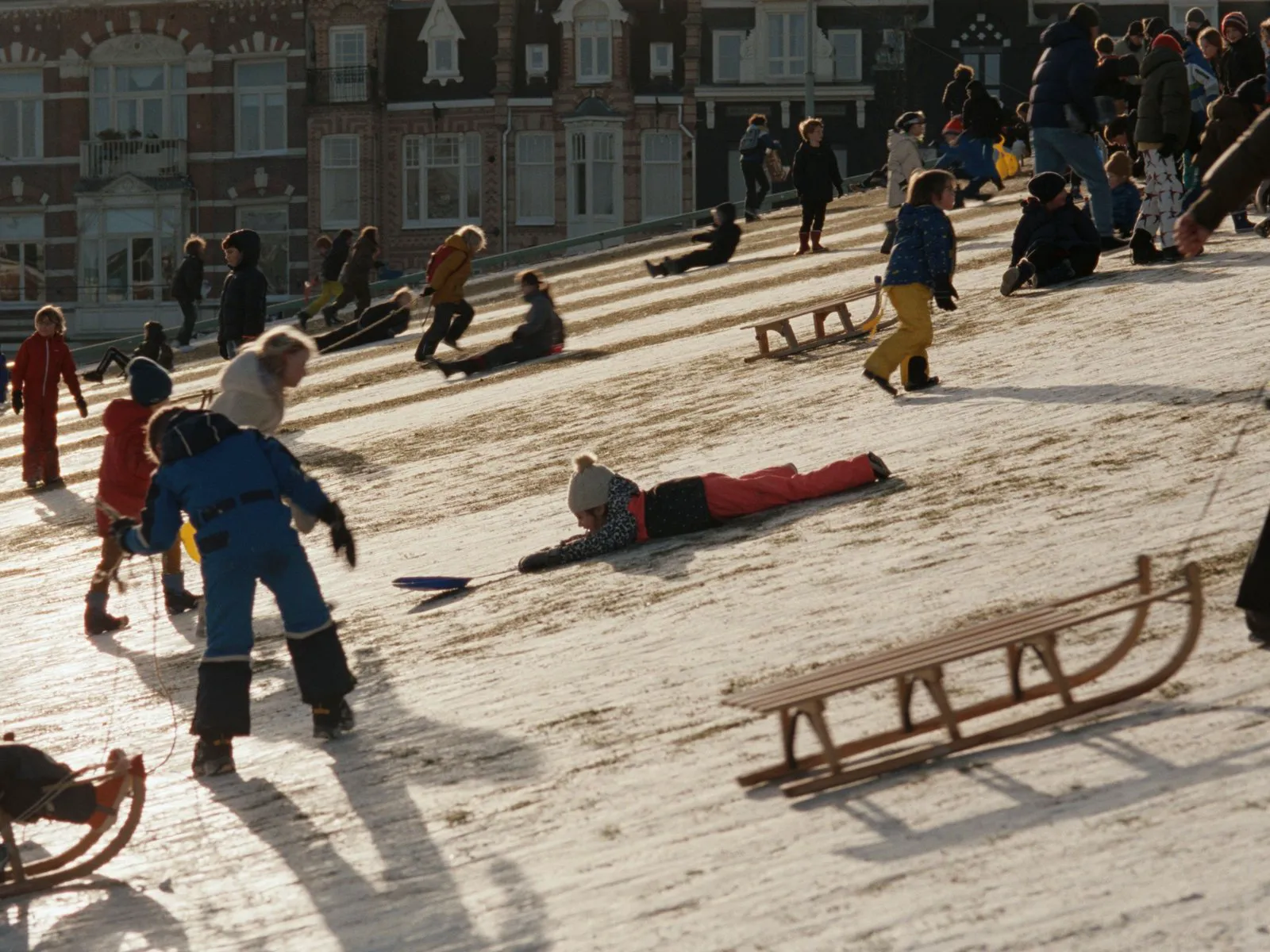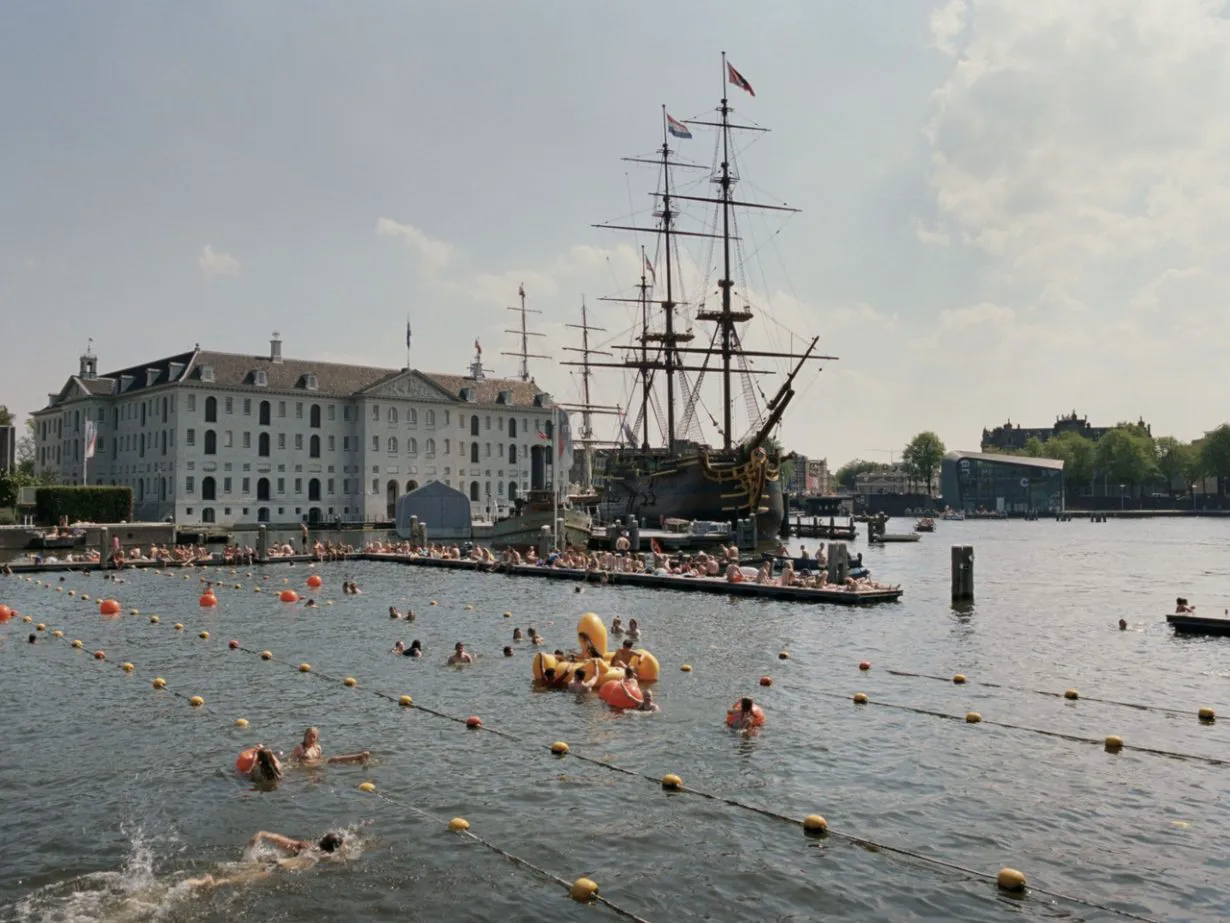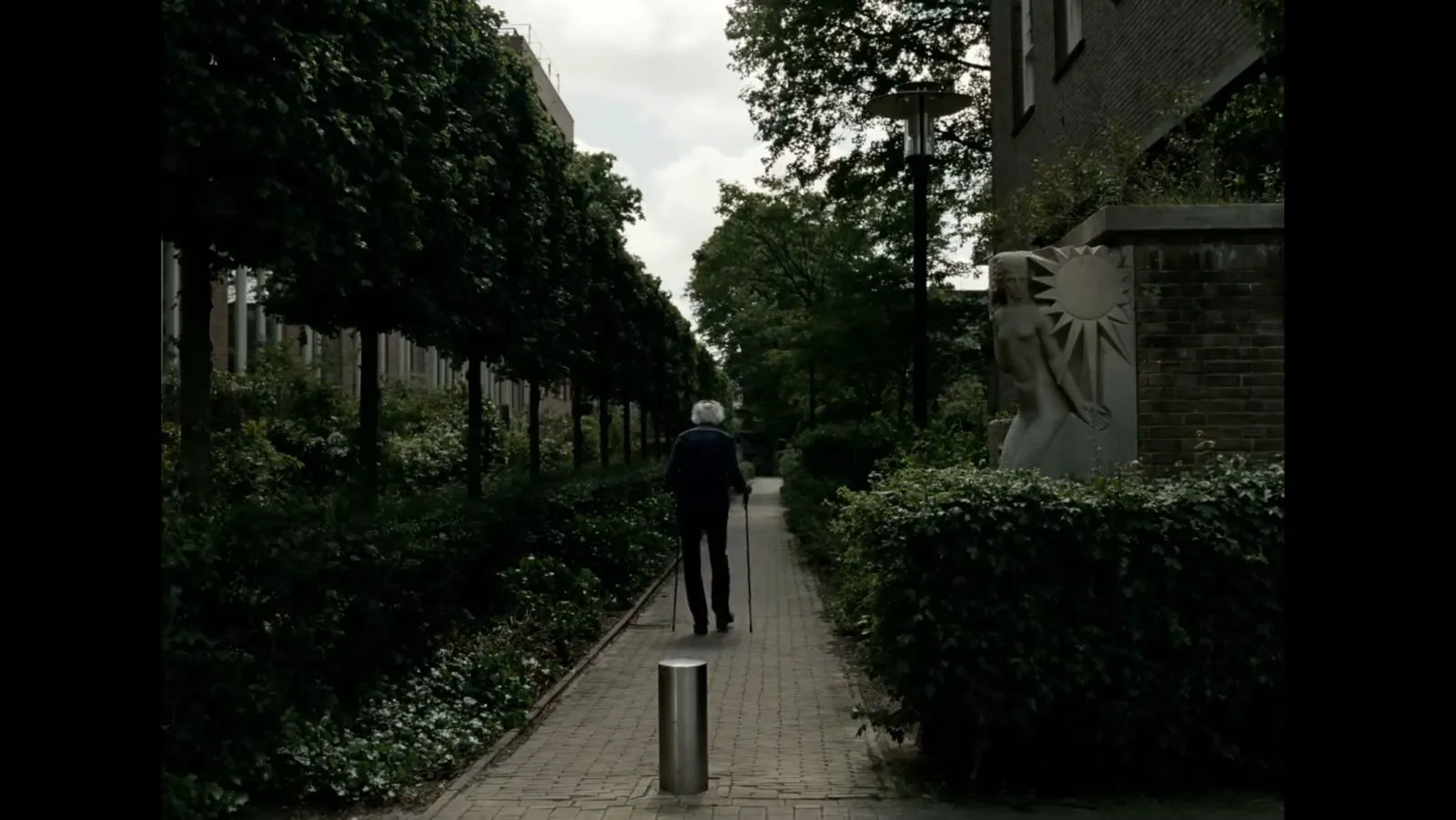A Haunting Portrait of Amsterdam: Steve McQueen’s “Occupied City”
The camera drifts through the modern streets of Amsterdam. The city seems to be greeting the spring of 2020, and with it, the COVID-19 pandemic. Sidewalks empty, anxiety fills the air, but the Dutch capital remains as beautiful as ever. Certain buildings capture the cinematic eye, and along with the camera and the viewer, an invisible Melanie Hyams pauses before the luxurious facades. Her voiceover recounts what happened in the city from 1940 to 1945.

Still from the documentary “Occupied City”
When discussing cities affected by World War II, Amsterdam is rarely mentioned. Indeed, the Dutch capital avoided blockades and carpet bombings. The city was taken by the Germans in a few days in May 1940 and surrendered by the same Germans in the same few days in May 1945. The most common association with Amsterdam in the 1940s is the diary of Anne Frank. Under the threat of deportation to a concentration camp, the girl lived for two years in one of the city’s many hiding places. Most of “Occupied City” is devoted to these shelters, and many of the tiny stories follow the same pattern: compassionate residents hide Jews for several months, a collaborating neighbor hands them over to the occupying authorities, and the unfortunate people are sent to a concentration camp where they die. The tragedy of Anne Frank’s story lies in its ordinariness.

Still from the documentary “Occupied City”
A Monumental Undertaking
“Occupied City” runs for just over 4 hours. During this time, the director manages to practice incredibly beautiful shots over the night capital, look into the homes of ordinary people, and visit seemingly all of the city’s public spaces, not to mention the charming streets already mentioned. The rough cut of the film was 36 hours long, which means, apparently, the entire “Atlas of the Occupied City. Amsterdam 1940-1945” by Bianca Stigter was read aloud – the book from whose phrases the film is composed. But it was impossible to release the film in this format, and the authors did not want to transform the project into a series. Thus, a 266-minute film was carved out of a mountain of material.
The monumental creation is overwhelming in its monotonous presentation and the contrast between what is shown and what is said. Innocent people were sent to Auschwitz to certain death from almost every house. Some sooner, some later, some not to Auschwitz but to Theresienstadt, but the essence is the same. In our time, the city shines with skyscrapers and twinkles with Christmas markets, people live in it, not noticing the pandemic, and the past tragedy is not evident in a single detail. There is no conclusion, and perhaps there cannot be, but the 70-year gap that forms in the viewer’s mind is striking.

Still from the documentary “Occupied City”
The Enigmatic Author
The most enigmatic thing about “Occupied City” is the figure of the author, Steve McQueen. The Oscar winner for “12 Years a Slave,” who has successfully tried his hand at “big” television with “Small Axe” and in Hollywood with “Widows,” has made a film that would have been more than appropriate in the Rotterdam or Locarno competition, where the director never seemed to gravitate. It is all the more surprising to find such impressive degrees of creative freedom behind the Briton. However, in this particular case, it is probably due to the influence of McQueen’s wife, Bianca Stigter, the very one whose book formed the basis of the film. “Occupied City” has much more in common with her directorial debut “Three Minutes: Lengthening,” also on the theme of the Holocaust, than with any of McQueen’s previous films.
The choice of Amsterdam, rather than any other city, is primarily due to the fact that McQueen and Stigter live there. Unremarkable in the context of the history of World War II or in connection with the lockdowns of 2020-2022, Amsterdam hides so much grief that it would be enough for 4, 36, or 136 hours of stories. But the city is fortunate that the Stigter-McQueen couple settled there. Hundreds of other settlements have either already received other chroniclers or are only waiting for them. The occupation can last as long as it wants, but sooner or later, those who carefully recount all the crimes and present them to the public arrive – with all the names and details.